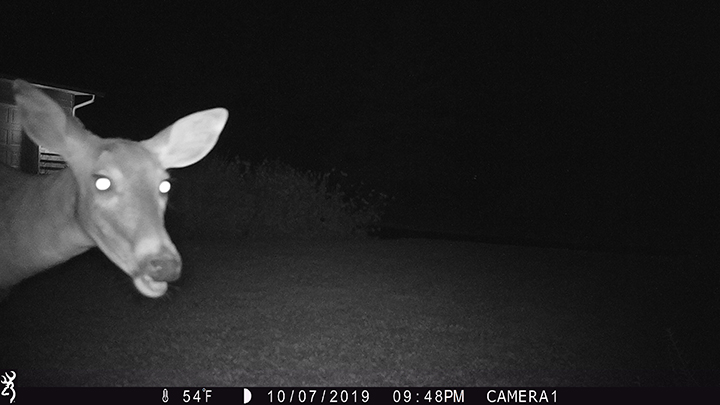Column: Dealing with Critters in the Garden

Did the topic for this week’s garden column make your blood pressure rise? I think that’s a common reaction when it comes to dealing with critters in the garden! You might be waging a war with deer, gophers, squirrels, rabbits – you name it.
In my column, I discuss the importance of identifying who your nemesis is first because that has a direct bearing on how successful you’ll be. Then I cover the types of strategies you might consider using to keep them away from your garden. I hope you’ll find it interesting and helpful.
I should also mention that the 3rd chapter in my new book, The Vegetable Garden Problem Solver Handbook, is devoted to 15 of the most commonly-encountered critters in the garden. And it is absolutely filled will suggestions and strategies for dealing with them. My book is available at all of the sources you’d expect, both local independent bookstores and from online sources. But if you’d like to get a signed copy directly from me, just send an email to Susan@SusansintheGarden.com.
Here’s my column:
by Susan Mulvihill
It’s really annoying when different types of critters love our vegetable gardens as much as we do. In the Inland Northwest, gardeners regularly deal with deer, squirrels, raccoons, gophers, voles, mice and berry-stealing birds.
Identifying the guilty party is essential once you notice damage in your garden. This makes a big difference in how successful you will be because the strategies vary, depending upon the animal you’re dealing with.
Take note of the crops the critter has been attracted to and what the damage looks like. Do you see any pawprints in the soil that also will help with identification?
A few years ago, we bought an inexpensive game camera and mounted it on an old tripod so we could move it around our yard. Whenever the camera’s motion sensor is triggered, it takes a photo. While it has been helpful for identifying who’s visiting our garden, it’s just plain fun watching critters moving about under the cover of darkness.
The critter control strategies one might use fall into three general categories: repelling it from the area, scaring them away or creating a barrier that blocks their access to your garden.
For example, if deer are a problem, you might use an organic deer repellent or bars of deodorant soap. These irritate a deer’s keen sense of smell.
Another option is to frighten them with a motion-activated sprinkler. You set the area it monitors – such as the path they take to visit your garden – and hook it up to a hose. When anything triggers the motion sensor, the sprinkler shoots a jet of water in that direction. Let’s just hope it was a deer and not you!
Barriers are the most successful way to keep deer out of your garden. A 7-foot-tall fence is really effective at thwarting their impressive jumping skills. Other barriers include chicken wire cages placed over the most desirable plants or two lower fences spaced a few feet apart. The latter works because deer aren’t able to jump high and wide at the same time.
We have issues with the large covey of California quail in our yard. As avid birdwatchers, we enjoy observing these beautiful birds but there’s an evil side to our feathered friends. Quail love pecking at newly-sprouted seeds, young seedlings, lettuce leaves and more.
Because of this, I have to provide plantings with protection. Sometimes I’ll cover the entire bed with hoops and floating row cover so they won’t know what’s growing underneath. I often use bird netting in place of a row cover over our lettuce bed. Placing pruned branches around young seedlings is another way to prevent the quail from getting close enough to cause damage.
We drape mylar flash tape in our berry patch well before the raspberries and blackberries start ripening. This is important because you want to scare robins and other birds away from the area. If you wait until the berries are ripe, the birds will do anything to get at them.
Squirrels and raccoons are very challenging to deal with. Never put out food for them. I know we’re all nature-lovers but this will cause a lot of problems for you and your neighbors. These animals are attracted to birdseed and pet food. By eliminating something that’s attracting them, they’re likely to move elsewhere.
When it comes to dealing with critters, being creative will allow you to enjoy your harvest.
Susan Mulvihill is author of “The Vegetable Garden Problem Solver Handbook” and “The Vegetable Garden Pest Handbook.” She can be reached at Susan@SusansintheGarden.com. Watch this week’s video at youtube.com/susansinthegarden.

